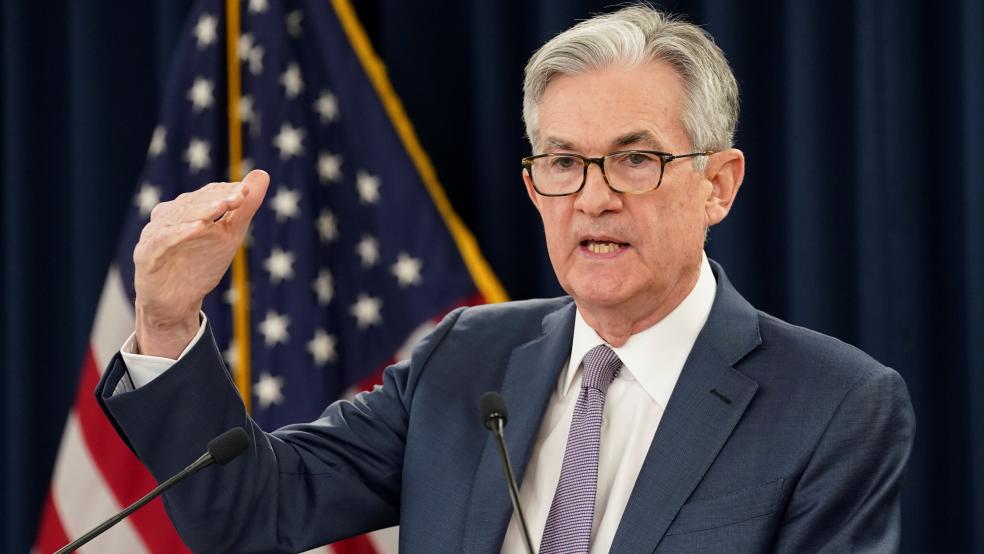As inflation continues to massively surpass the Federal Reserve's 2% target, we are beginning to hear growing calls from some economists to raise the target inflation rate to 4%. Before the House of Representatives Financial Services Committee last month, Fed Chair Jerome Powell was asked several times about the possibility of raising the Fed's 2% target.
This follows a suggestion from Nobel Laureate economist Paul Romer that the Federal Reserve should raise the target to 3% or 4%. This isn’t a new idea. Economists have been making the case for a higher inflation target for the past decade, and now commentators, such as Matthew Yglesias are starting to promote this idea, too.
While raising the inflation target would allow the government to partially inflate away the Federal debt, the costs of such a policy change would fall on consumers, business owners and workers.
Those who want to raise the inflation target say doing so would reduce the probability of hitting the zero lower bound — a problem that occurs when interest rates are near zero. Such a situation limits the Federal Reserve's ability to reduce rates to stimulate the economy in the event of a downturn.
Whether or not a higher inflation target would reduce the risk of hitting the zero lower bound is a matter of debate. A 2020 Federal Reserve Bank of Boston working paper found that raising the inflation target to 4% would be largely ineffective at preventing the zero lower bound.
What’s more, arguments for a 4% target contradict each other. In the years after the Great Financial Crisis, proponents of a higher inflation target argued that low inflation was reason enough for a higher inflation target. Today, the proponents of a 4% target rate have done a complete 180 — they now argue that this policy is a solution to “above-target inflation.”
How can it be that both inflation below 2% and above 6% are equal justifications for a higher inflation target?
In fact, raising the target inflation rate to 4% in order to justify persistent overshooting of the Feds’ 2% average inflation target would likely damage the Federal Reserve's already fragile credibility.
It isn’t just the Fed's credibility that would take a hit — there are serious economic costs that result from higher trend inflation. For instance, savers and especially retirees would be hit hard by persistent 4% inflation. The average American reaching retirement age has a little over $200,000 in savings. With 4% inflation, their savings could be cut in half every 18 years, unless they seek riskier investment choices.
Empirical studies have examined the welfare costs of raising trend inflation from 2% to 4%. These studies find that such a policy change would generate a consumption-equivalent welfare loss of 3.7% to 6.9% — a significant hit to the average consumer.
Most economists recognize the costs of raising the inflation target. A 2017 survey of economists conducted by the University of Chicago's Booth Review found that over half of economists in the weighted survey believed that raising the inflation target to 4% would impose long-term costs on households. Consumers can expect continually increased prices as the median wage growth for American workers drives employers to charge more for goods and services.
On a similar note, a 2021 study published in the Journal of Money, Credit, and Banking found that higher trend inflation leads to more economic uncertainty and a greater loss of economic output in the long run.
The Federal Reserve has spent decades building credibility around its price stability goal of 2% inflation. By raising the target rate to 4%, decades of hard work in building credibility around this goal could crumble. As Columbia University economist Frederic Mishkin argues, “the public is likely to believe that price stability is no longer a credible goal of the central bank and then the question arises, if a 4% level of inflation is OK, then why not 6%, or 8% and so on.”
Since the 1990’s, economic consensus has deemed 2% inflation to be the optimal target. The reason for this has been the cost associated with a higher inflation target. Central banks have focused on targeting inflation to a level where people no longer worry about it. The consensus seems to be that any inflation threshold above 3% imposes welfare costs.
Inflation targets of industrialized countries all lie between 1% and 3%. This reflects the general range of targets consistent with price stability.
Keeping inflation at around 2% seems to best align with the Federal Reserve's mandate to keep inflation low and stable. The empirical literature corroborates the case for keeping the Fed’s target where it is now and not moving it upward.
Economists and Fed officials should be willing to push back against growing calls for raising the trend inflation target. A 4% target would promote uncertainty and cause economic harm to American consumers, workers and businesses.
These long term costs far outweigh any perceived marginal benefits on interest rates.
Jack Salmon is a research assistant focused on the US economy, federal budget, higher education, immigration, and institutions and economic growth. His research and commentary have been featured in a variety of outlets, including The Hill, Business Insider, Foundation for Economic Education and Dallas Morning News.





